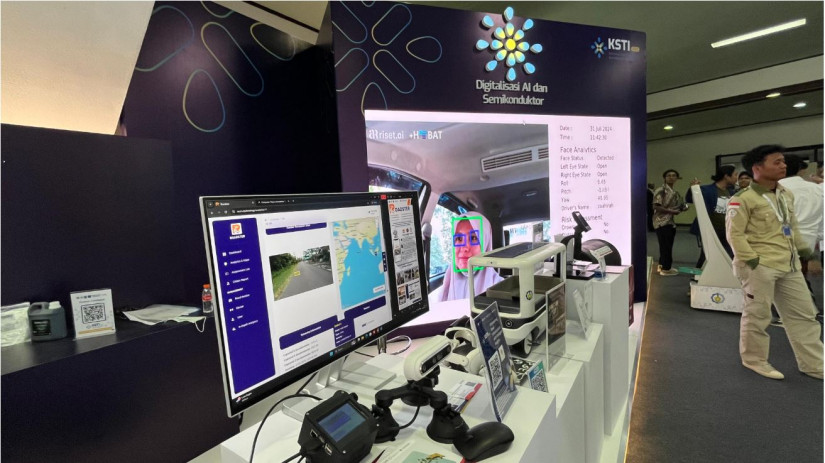
A road-damage detection device based on algorithmic and artificial intelligence (AI) technology, named ROADSTER, developed by a UGM research team, has been exhibited at the 2025 Indonesian Science, Technology, and Industry Convention (KSTI), held at Sasana Budaya Ganesa, Institut Teknologi Bandung (ITB), Bandung. The device can detect cracks, potholes, and road deformation using sensors and AI algorithms.
ROADSTER was featured as a flagship innovation in the Digitalization, Artificial Intelligence, and Semiconductor cluster, aligning with the convention’s main theme: “Science and Technology for Economic Growth and Equity.”
“ROADSTER is the result of integrative research combining AI, IoT, and visual recording systems to perform automatic road condition assessments,” stated Dr. Agustinus Winarno, the lead researcher, on Friday, Aug. 8, 2025.
As the coordinator within the Department of Mechanical and Civil Engineering, UGM Vocational College (SV UGM), he developed the system with active involvement from students, Octaviano and Fauzan Karnadi.
“These students are also present to maintain and explain the tool during the exhibition,” he added.
Dr. Winarno explained that at the KSTI exhibition, ROADSTER drew significant attention as a concrete solution to Indonesia’s road infrastructure challenges.
Visitors viewed a prototype designed to detect road cracks, holes, and deformation via sensors and AI.
“The visual data is mapped onto a dashboard to assist stakeholders in decision-making,” he said.
He also highlighted that ROADSTER’s presence at the exhibition underscores UGM’s commitment to research downstreaming and national digital transformation, echoing President Prabowo Subianto’s remarks during the KSTI opening.
Even the president set an 8 percent national economic growth target via technological mastery and industrialization, including digital infrastructure relevant to ROADSTER.
“ROADSTER also facilitates community participation through plans for a community-based road reporting app, and has engaged the Yogyakarta Public Works and Housing Agency as a field partner,” he added.
Moreover, this convention not only served as a showcase but also as a strategic platform for ROADSTER to cultivate multi-sector partnerships.
With more than 3,000 attendees, including Nobel Laureates in Physics Professor Novoselov and Professor Schmidt, KSTI 2025 marked a strategic moment for applied research.
“We hope ROADSTER will make its mark both nationally and internationally,” he concluded.
Author: Agung Nugroho
Post-editor: Lintang Andwyna

